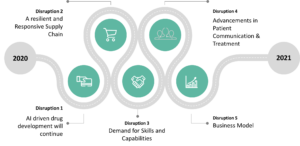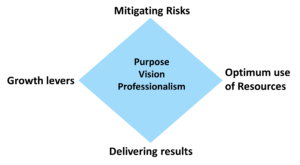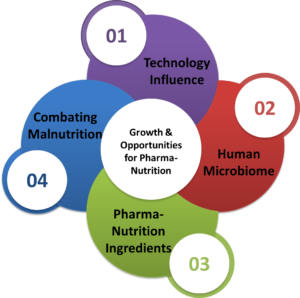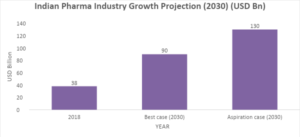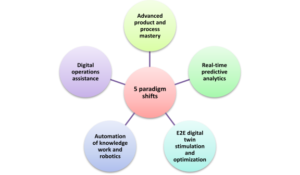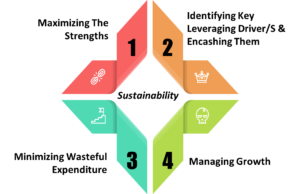Pharma-Nutrition as a subject by itself, considering one is not complete without other part in bringing wellness to life. Hence, it is that amazing combination where prevention, cure and wellness of patient are taken care of.
Pharma-Nutrition in New Normal era:
Pharma is transiting from Medicines to Food for Special Dietary Use (FSDU) to Pharma Nutrition as the food has various dimensions and each country has its own food habits. It may a fully nutritionally balanced or there could be a total lack of it.
Nutrients are best available through food and how it is cooked, use of oil, fats and the spices are used. Food occupies a significant role in Health. Health domain in next normal era is likely to witness significant changes across the world.
Beyond that it is a matter of palate and organoleptic senses issue. Few May live life with burgers and aerated drinks, few may have their own ways.
However, obesity in childhood and Diabetes in younger age makes us feel that there is a need of something like Pharma – Nutrition.
Pharma- Nutrition convergence
Father of medical practise Hippocrates has already said that “Food be thy medicine, Medicine be thy Food and walk a mile….” which is a powerful message on the medical practise all over the world. A step beyond, traditional Indian medicines, provide a three cornerstones formula for fullness of health!
- Ahar
- Vihar
- Aushadhi…..
Essentially Diet, Exercise and Medicines!!
Fig. 1.1: Pharma Nutrition Convergence
To effectively respond to viral infections, pharmaceutical products can repair the inflammatory and degenerative regions that degenerate in the respiratory tract and restore homeostasis of the metabolic processes. Simultaneously, nutrition and micro-nutrients continuously build up immunity of the same patient. Is it not Pharma-Nutrition has symbiotic effect to make patient healthy?
Other way round also, immuno-protection is the corner stone of the medical practise. The preservation of the immune system is the strategic measure of public health in social and clinical management of life-span extension world-wide.
Growth and opportunities for Pharma-Nutrition
A. Technology influence:
On one hand as a result of fermentation technology there are ways of creating plant products and on the other hand scientists are taking help of making the nutrients available in precise quantity as per individual need.
One is acting at developmental stage and the other one is looking at designed quantity for the patient!
It is during the knowledge dispersal stage where cross-disciplinary excerpts carry out joint research in time. Like economy is going towards “Shared Economy”, research is also moving towards “Shared Knowledge” and insights to shorten time and makes a meaningful contribution which in turn leads to technology concurrence.
B. Human microbiome:
Pharma – Nutrition concept should aim at searching its soul in human microbiome. More insights from human microbiomes would generate more solutions for human beings.
Fig. 1.2: Growth and opportunities for Pharma-Nutrition
C. Pharma-Nutrition ingredients:
The fullness of health approach should be derived from the strengths of both disciplines. Strengths of pharmaceuticals industry for its R&D capabilities, defining quality, safety and efficacy as well as standards of each molecule or evidence-based nature of discerning product can be combined with nutraceutical strengths of nutrition, clinical nutrition, biochemistry, bioavailability, bio markers, to ensure wholesome heath progress. Several bioactive compounds including fibre, secondary plant molecules, friendly bacteria, essential fatty acids, probiotics and probiotics can be manufactured with promising value proposition.
Moreover, many pharma molecules are extracted from natural plants or by technology which humans can use as medicines or as nutrients. Vitamins, minerals, curative and prophylactic solutions have been derived from many such combinations.
Nutraceutical molecules like Lutein, Lycopene, Zeaxanthin, Spirulina and others have in-built properties to prevent and also cure few medical conditions.
Optimal health and elimination of chronic disease can be accomplished by this combination.
D. Combating malnutrition:
It is perceived that a number of modern diseases are linked to poor diets and the concept of “malnutrition”, even in those who are getting sufficient quantity of calories and lacking proper balance of several food ingredients such as amino acids, peptides, minerals, etc. Furthermore, there is budding evidence to indicate that definite nutritional balance through supplement can preserve patient health beyond widely used medicinal treatments.
Emerging issues
The new ‘Pharma-Nutrition’ has to face five major challenges:
- Education to healthcare providers
- Difficulty in patenting the products
- OTC prone nature of Nutraceutical products
- Prescription limitation of dieticians and nutritionists
- Belief system of HCPCs
Pharmaceutical companies will learn to collaborate for benefits of patient’s health. Nutrition companies need to improve their research and development to enhance their scientific capabilities as well as building key relationship with drug companies and practitioners.
New landscape
Pharma-Nutrition may not be a concept in practise as it is observed that majority of specialities have the tendency to provide nutrition benefits to patient at a particular function where they feel it’s better to provide some sort of strength to the patient.
Modern medicines usually focus on single target condition and provide entire relief or cure, irrespective of its effects on other organs. On the contrary, the multi-target medicines (Pharma-Nutrition) may be used in synchronised way to provide maximum benefit to patient.
References:
- G. Folkerts, Pharma-Nutrition-An Overview_Springer_ www.springer.com_Accessed on 5.11.2020
- Tamar C. Weenen, Bahar Ramezanpour, and Eric Claassen_ Food-Pharma Convergence in Medical Nutrition-best of Both worlds_PLoS One_journals.plos.org_Accessed on 5.11.2020
- Niki A Georgiou, Johan Grssen, Renger F Witkamp_ Pharma-Nutrition interface: the gap is narrowing_PubMed.gov_pubmed.ncib.nlm.nih.gov_Accessed on 5.11.2020



